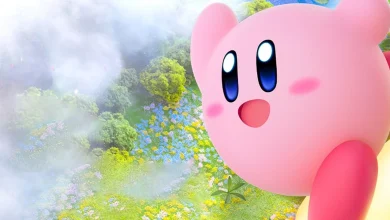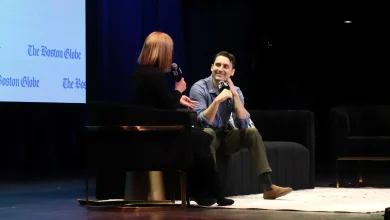Faith, poetic precision and visionary charge: Patti Smith’s new memoir

MEMOIR
Bread of Angels
Patti Smith
Bloomsbury, $34.99
The crumb trail begins at once. “The pen scratches across the page rebel hump rebel hump rebel hump. What do those words mean, asks the pen. I don’t know, says the wrist.” That’s the bread of angels: the mundane summoning the mystical. Patti Smith is the go-between, setting the vibration to language, trusting meaning will come.
It’s a spark poets and songwriters know well: sound as the seed of a world more felt than understood. In this latest in her series of gloriously transporting memoirs, Smith follows that scratch into the awkwardness and beauty of childhood, the place where “the kingdom of the infinite imagination” first opened beneath her feet.
Her earliest memories shimmer as if through a looking glass in the back of a wardrobe: the doll rescued from a cliff; the maple bureau whose knobs are dials to infinity; the rat-infested underworld she patrols with the neighbourhood children; old Aggie across the hall with her dark green book of Irish fairytales.
“Mine was a Proustian childhood, one of intermittent quarantine and convalescence,” she writes. A dose of Asian flu intensifies her insistence on divine structure. Her mother’s emptied tip jar and the Puccini box set on the dresser are “a marriage of art and sacrifice” that literally saves her nine-year-old life.
The outer world she describes as her struggling family bounces between Philadelphia apartments is no less heightened. “I was happy there observing the last vestiges of the 1940s, soon to succumb to modern times,” she writes. “There were horse-drawn wagons, the iceman, a ragman, and an organ grinder with a monkey with a little red cap.”
Patti Smith in 1969.Credit: Norman Seeff
She’ll return to the loss of that paradise later, but her spirit world never falters, even as she trades up her mother’s devotion to the Jehovah’s Witnesses for Picasso, Modigliani and Sargent at the Philadelphia Museum of Art. “I believed in the Creator, the many tongues of nature, the moral lessons of fairytales, the language of trees, and the clay of the earth … God, the infinite realm, Jesus, the human bridge, the artist, the material mouthpiece,” she writes. Breadcrumbs are everywhere: animals, constellations, fragments of ancient alphabets.
A teenage pregnancy and a broken family nest hurl her towards New York, and the part of her story fans will know. Mapplethorpe, Shepard and the Chelsea Hotel; Dylan and Burroughs and Lenny Kaye, terrain that crisscrosses her earlier books from fresh angles. “Claiming the right to create without apology from a stance beyond gender or social definition” is one of her cascading manifestos.





